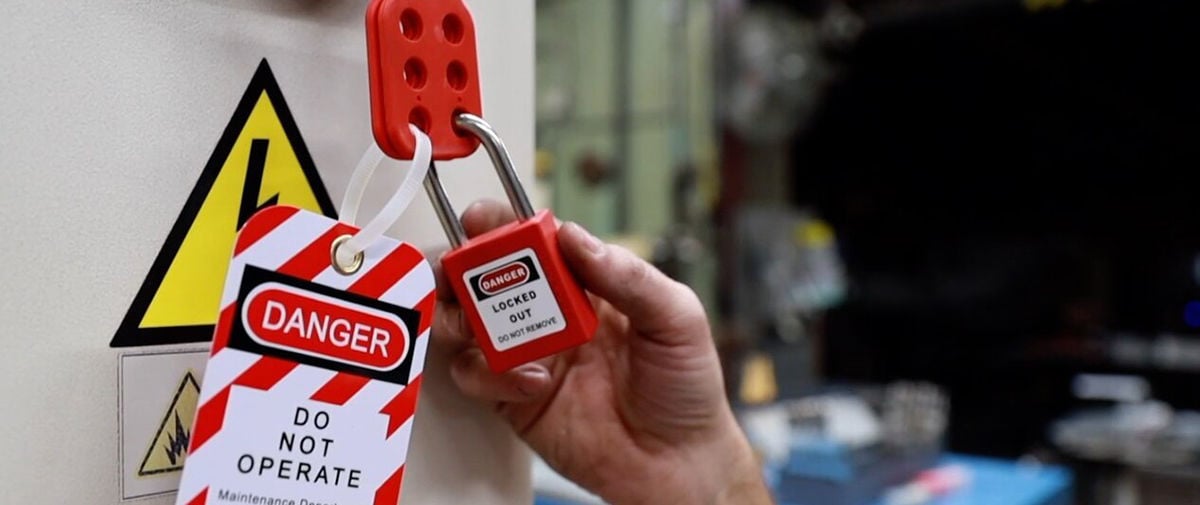Lockout/tagout policies and procedures protect workers from hazardous energy during overhead crane repair and other machine and equipment service.
Chris Brewer, Technical Trainer
The intention of lockout/tagout is to lockout and dissipate all energy sources—and verify a zero-energy state—before maintenance work can begin. In addition to electricity, the following hazardous energy sources also need to be locked out:
- Steam
- Hydraulic pressure
- Heat and thermal energy
- Air pressure
- Mechanical energy—kinetic energy and gravity
Kinetic energy, often overlooked, has the potential to do serious harm. For instance, consider the blades of a fan that continue moving for a time after you shut off power.
And gravity poses danger to people involved in, and in the vicinity of, overhead crane repair. After the power is shut off, gravity can bring a heavy hook crashing to the ground—and start the motor turning. This action endangers technicians, who could get caught up inside the gear case, drum, motor, coupling or shaft. The answer to locking out an overhead crane hook is to bring the hook all the way to the floor.
While not an energy source, hazardous chemicals also require lockout to prevent harmful exposure—either from direct exposure or via fumes.
The five components of an effective lockout/tagout program
1. A corporate policy
As an example, Konecranes policy adds a third degree of safety to lockout/tagout. We call it tryout.
- Lockout involves using a permanent locking device—such as a lock, cover or chain—to prevent energy sources from being turned on and potentially harming maintenance workers or other personnel.
- Tagout involves using a tag to warn others to keep a locked-out switch, circuit breaker or valve turned off.
- Tryout goes one step further to verify that locked out and tagged out equipment is in a zero-energy state, posing no threat to personnel. In the case of electrical power, a technician, wearing National Fire Protection Association approved gear, uses a contact meter to verify that all phases dropped out. Even when the breaker is switched off, one of the contacts could be welded shut, delivering power to a crane. It’s best to always verify and never assume. This extra step reflects Konecranes strong safety culture.
2. Machine-specific procedures
That is, procedures that define the energy sources that require lockout/tagout on each piece of equipment. Through Konecranes Point of Work Risk Assessment (POWRA) procedure, we identify all hazards around a work area and develop a plan for controlling the risks before beginning the work.
3. Training
Lockout/tagout training is required for all authorized employees – both those who conduct lockout/tagout and those affected by lockout/tagout, such as crane operators and others who work in the area. Training, which includes classroom and hands-on sessions, should be completed at orientation as well as annually.
4. Annual audit
Lockout/tagout policy should be reviewed each year to make certain it is current.
5. Approved equipment
Locks aren’t effective lockout devices for all equipment. Valves, for instance, often require covers. Other commonly used lockout devices include chains and blocks.
In some cases, multiple technicians and contractors service equipment at the same time. One person may be involved in overhead crane repair, while another works on lighting and a third on the heating and cooling system. Each person must be supplied his own lock, and that lock’s one and only key. As each technician completes his task, he removes his lock. This keeps the energy source locked out until the very last technician completes his work and removes his lock.
